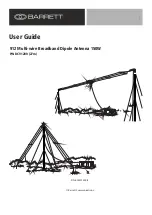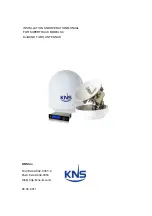
6 / 36
Aligning the antenna
The antenna must be exactly aligned towards the satellite in
respect of both the direction (azimuth) and also the inclination
(elevation). For multi-feed applications the antenna should be
aligned towards the satellite which is transmitting the weakest
signal.
a) Adjusting the inclination (elevation)
• Use the hexagon key (
) supplied with the parabolic antenna
to slacken the two screws on each side of the
inclination
scale
(elevation) on the
left and right
of the support.
b) Setting the direction (azimuth)
If you yourself are unable whilst performing the adjustments
to read the results of the alignment work on an
antenna meter
or
screen
connected to the satellite receiver, you may need an
assistant for the following steps. The precise alignment of the
antenna can be achieved only if a digital antenna meter is used.
Ask your dealer about this.
• Set the satellite receiver to a known channel so that you
can check that you have really “locked on” to the desired
satellite.
• Now slightly loosen the wing nuts on the mast clamp (
+
).
•
Turn
the antenna so that it faces roughly south. Then slowly
twist the antenna about its central axis to left and right until
the best reception is obtained for the selected channel.
• Then tighten the
wing nuts
initially just enough to prevent
the antenna turning.
• Then adjust the
inclination
(elevation) – the exact elevation
angle for your location can be found in the manual for the feed
system (LNB).
• When doing this, retighten
fi
rst just one of the bolts on the
inclination scale
fi
nger-tight (
).
Do not slacken the upper nuts
(
)
on the
bracket – these are factory-set to a
fi
xed
tightening torque.
+
















































